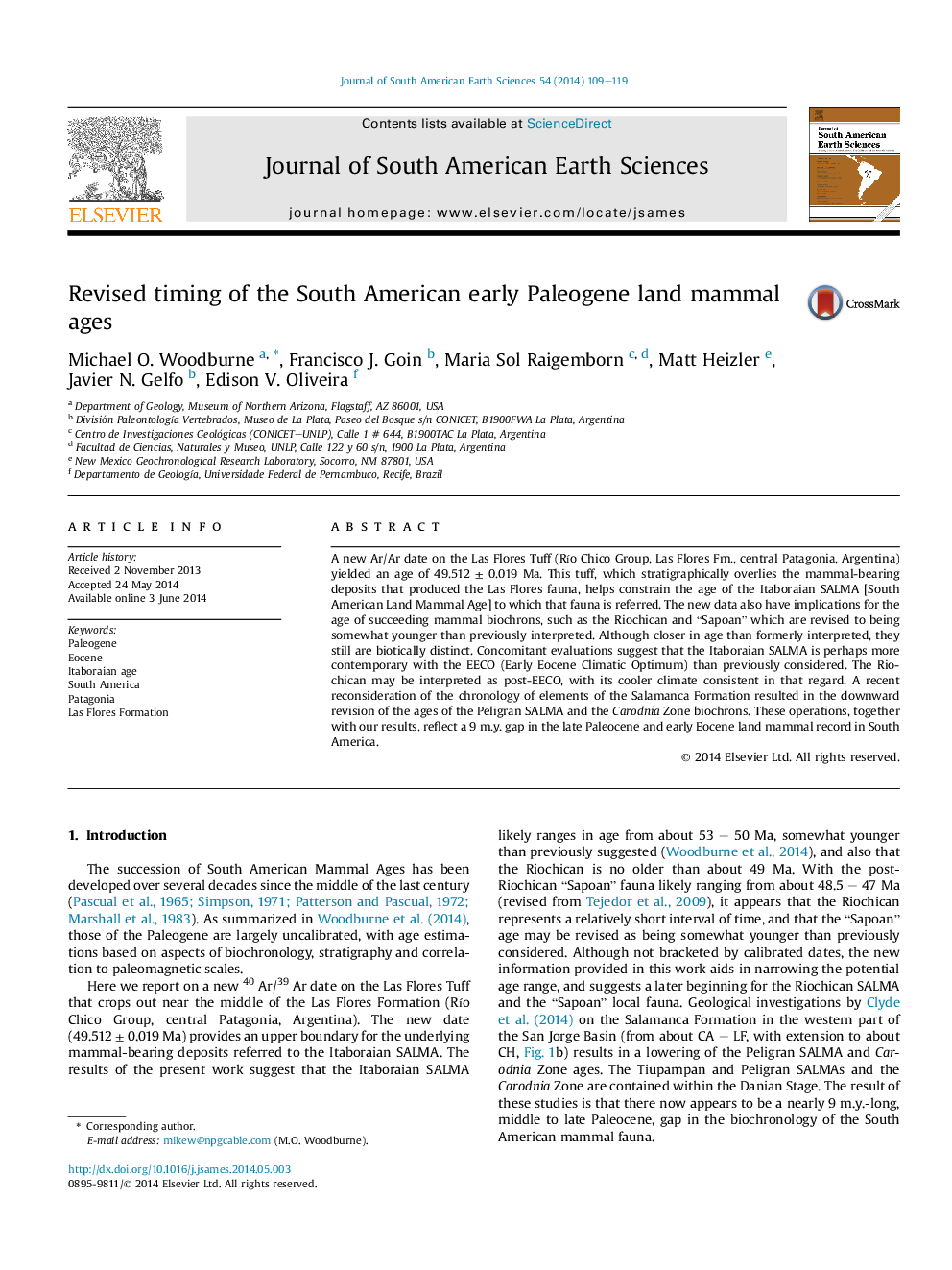| Article ID | Journal | Published Year | Pages | File Type |
|---|---|---|---|---|
| 4682318 | Journal of South American Earth Sciences | 2014 | 11 Pages |
•A new date constrains the Itaboraian South American Land Mammal Age to 53–50 Ma.•Faunal-stratigraphic data aid an upward revision of the Riochican and “Sapoan” SALMAs.•A 9 m.y. South American mammal record gap separates the Itaboraian and Carodnia Zone.
A new Ar/Ar date on the Las Flores Tuff (Río Chico Group, Las Flores Fm., central Patagonia, Argentina) yielded an age of 49.512 ± 0.019 Ma. This tuff, which stratigraphically overlies the mammal-bearing deposits that produced the Las Flores fauna, helps constrain the age of the Itaboraian SALMA [South American Land Mammal Age] to which that fauna is referred. The new data also have implications for the age of succeeding mammal biochrons, such as the Riochican and “Sapoan” which are revised to being somewhat younger than previously interpreted. Although closer in age than formerly interpreted, they still are biotically distinct. Concomitant evaluations suggest that the Itaboraian SALMA is perhaps more contemporary with the EECO (Early Eocene Climatic Optimum) than previously considered. The Riochican may be interpreted as post-EECO, with its cooler climate consistent in that regard. A recent reconsideration of the chronology of elements of the Salamanca Formation resulted in the downward revision of the ages of the Peligran SALMA and the Carodnia Zone biochrons. These operations, together with our results, reflect a 9 m.y. gap in the late Paleocene and early Eocene land mammal record in South America.
Graphical abstractOur new correlation shows upward revision of the Itaboraian and Riochican South American Land Mammal Ages (SALMA) and the resulting 9 m.y.-long gap in the fossil mammal record between the Itaboraian and the Carodnia Zone.Figure optionsDownload full-size imageDownload as PowerPoint slide
